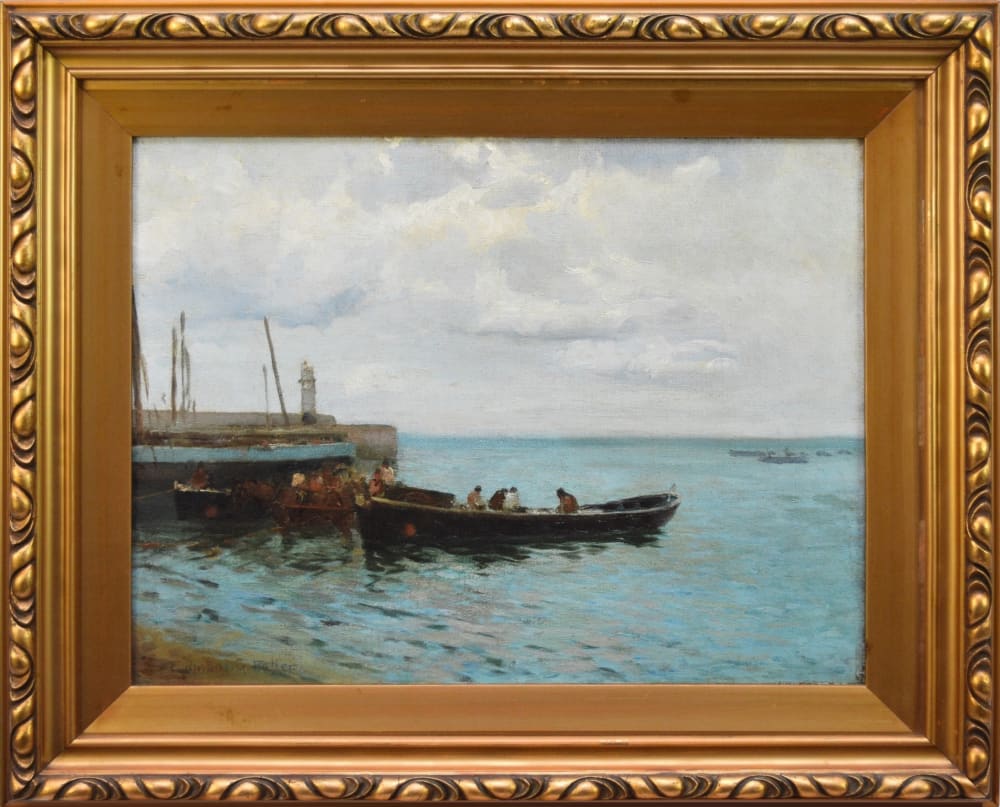
Seine Boats in St Ives Harbour by Edmund G Fuller
Edmund Fuller 1858-1940
Provenance
Collection of Mr Magdi Obeid (a significant collector of Victorian and in particular Cornish artists).
Purchased Woolley & Wallis 26/08/2020 lot 197
In Edmund Fuller's painting we see 3 seine fishing boats tied up along side Smeaton's Pier in St Ives, offloading their catch of pilchards. The long Seine boats would go out in groups of 3, with up to 17 crew aboard each, so that the boats could form an enclosing triangle between which the seine net was 'shot'. Seine fishing in St Ives was on an industrial scale in the 19th century with more pilchards caught by the St Ives fleet than the rest of Cornwall's fishing boats combined. Across the 19th century billions of pilchards were caught, salted in barrels and shipped to markets in Italy, Spain and even as far afield as New York.
The largest recorded catch in a single day in St Ives was in 1847, when a staggering 57,000,000 pilchards were landed. Fuller had arrived and settled in St Ives in the 1890s, in time to see this remarkable fishing industry just prior to its decline in the early 20th century.




